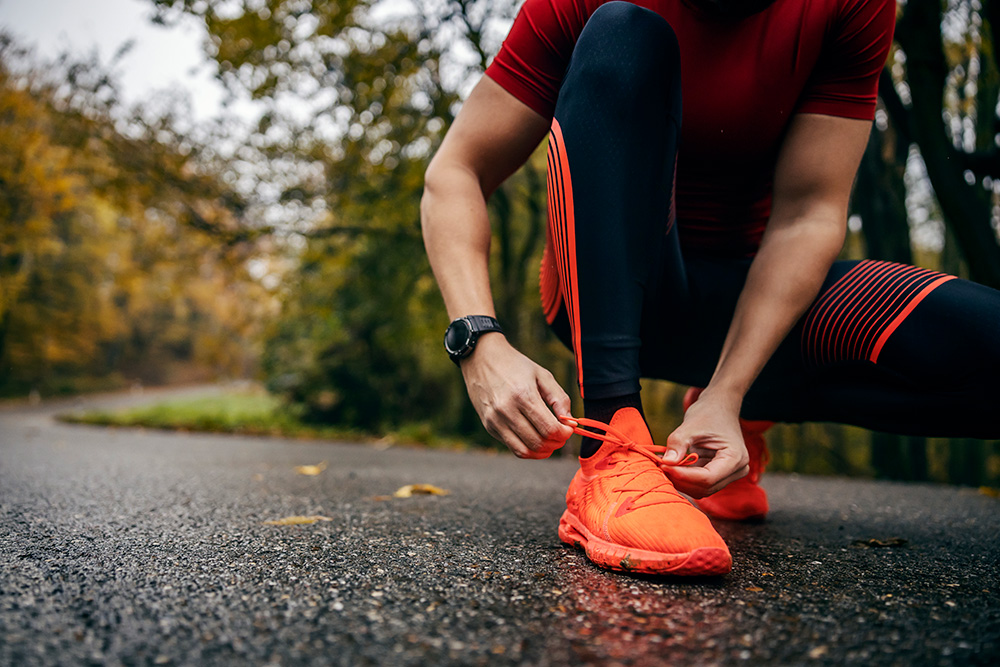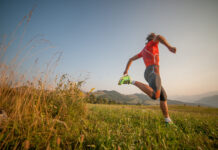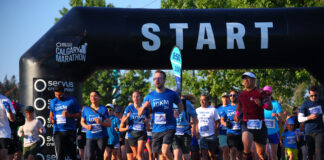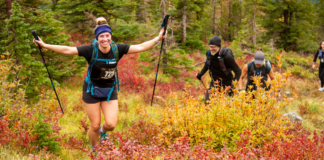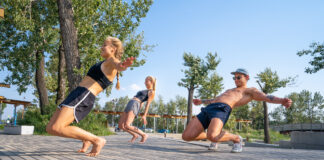It’s insanely satisfying to find that Holy Grail pair of running shoes that perfectly fits your foot shape, provides the right amount of cushion, and delivers grippy traction to keep you from slipping. If you’re anything like me, your tendency is to immediately buy as many pairs of this model as possible in case the manufacturer messes with the design next year or—worse yet—discontinues it completely.
Although you’re probably attached to your beloved running shoes, switching up and rotating your running shoes can help prevent injury and prolong your longevity in the sport, as long as you do it correctly. Here are a few things to consider.
The Benefits of Rotating Your Running Shoes
You might read this and think, “I get it, but I really love these shoes, and is it really so bad to just stick to multiple pairs?” Perhaps not initially, but over time you may start seeing adverse effects in your running mechanics, which might predispose you to injury and negatively impact your running economy.
“We all have habitual movement patterns that dictate how we walk, run, hike,” says Dereck Steffe, DPT, a physical therapist who treats endurance athletes at Return to Sport Physio in Evergreen, Colorado. “It doesn’t take long for our shoes to reflect those movement patterns in the form of excessive or uneven wear on the soles of our shoes. If the shoe is allowed to degrade, the uneven wear will start to feed into our problematic movement patterns, perhaps even exacerbating the very movement flaws we are trying to avoid. Shoe rotation can slow this process down, protecting the integrity of the shoes by reducing their mileage.”
Bulletproof Your Feet and Lower Legs
If you’re looking to prioritize your durability and the lifespan of your running days, movement quality must be a paramount consideration. Keeping each pair of your shoes fresh by thoughtfully rotating them can go a long way when it comes to bulletproofing your lower legs, particularly if you also load your bones and connective tissues by strength training two or three times a week.
Switching up and rotating your running shoes can help prevent injury and prolong your longevity in the sport.
“With shoe rotation, I keep coming back to the concept of movement patterns,” Steffe said. “Worn-out, degraded shoes can feed into faulty movement. Conversely, wearing shoes with differing stack heights and heel drops can challenge those patterns and even improve stride quality. At a minimum, switching between different shoes challenges our movement capacity, creating a more adaptable running stride.”
Heel-to-Toe Drops and Stack Heights
What criteria should you look for as you expand your running shoe quiver? Perhaps you should begin with the stack height i.e. how high the shoe rises from the ground, and the drop—the differential between the heel and toe of the shoe.
“I’ve used stack height and heel drop rotations to rehab my running patients,” Steffe stated. “It may seem counterintuitive, but I am a fan of putting my runners in minimalist shoes—very little stack height and no heel drop—on their off days or, if they can tolerate it, during their shorter/slower recovery runs. Physically, this drives some stress through the plantar fascia-Achilles complex creating a more supple, flexible, and durable foot and ankle.”
This isn’t all about the anatomy or physiology of your legs. The interplay between shoe, ground, and everything above also has a bearing on the mind-body connection that drives every move you initiate from your feet up.
“Neurologically, the less technology between your foot and the ground strengthens the neural pathways between the foot and the brain, improving our body’s response to ground reaction forces,” Steffe said. “Conversely, large stack heights are helpful in getting my runners, walkers, and hikers back on the trail/road a little sooner during the rehab process.”
Switching up the stack height and heal-to-toe drop of your running shoes can sometimes help with common running-related injuries such as plantar fasciitis and/or Achilles tendinopathy.
“If a person has very stiff feet and ankles, I may try to induce more range of motion by reducing the stack height/heal drop during recovery days or days off,” Steffe said. “I want to get their foot/brain back in touch with the surface they’re running on and take advantage of the plasticity of the muscle and connective tissue of the foot and ankle.”
Steffe adds: “If the patient has normal ankle/foot range-of-motion or is even hypermobile, I will have them start using a shoe with increased stack height/heel drop to provide extra protection to the plantar fascia-Achilles complex. “This will calm down the inflammatory process in this area. In both scenarios, the goal is to experiment until we get an effective combination of two to three pairs of shoes rather than abandon the original style of shoe.”
Let Your Feet Breathe
Going barefoot is also a really important part of this shoe rotation conversation. “Take your shoes off whenever you are indoors,” Steffe shared. “Again, this improves our connection to the surface we are walking on, and this, in turn, improves our body’s reaction to ground reaction forces.”
Going forward, you shouldn’t just randomly select a series of shoes to create a solid rotation. Rather, take a strategic approach based on your goals, training plan, coach’s direction, and racing goals.
“I advise experimenting with shoe rotations, making small changes,” Steffe said. “If you enjoy a large stack height and heel drop, back off a bit and buy a shoe with a bit less technology built into it. On the other hand, if you’re a minimalist type, perhaps adding just a bit of cushion and heel drop might allow you to up your mileage.”
To learn more about the durability and performance benefits of shoe rotation, talk to your coach, seek advice from the owner of a well-established local running shop, or find a physical therapist who has had proven success working with runners.
The article has been edited for length and reprinted with permission by TrainingPeaks
You may also like: 12 Weeks to Your 10 km PB
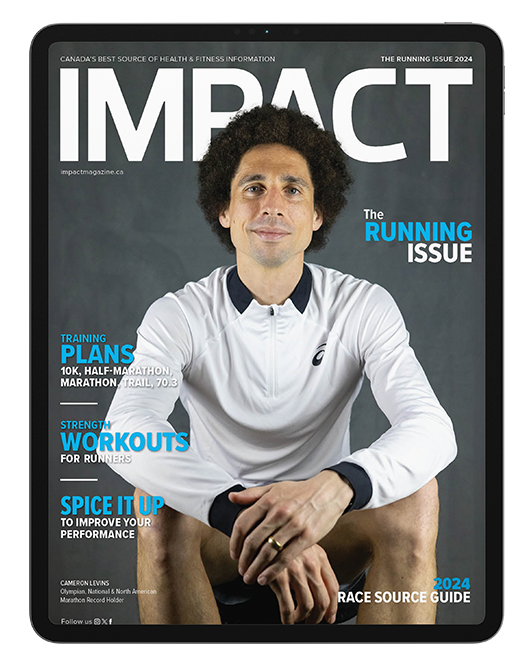
Read This Story in Our 2024 Running Issue
Featuring Canadian Olympic, National & North American Marathon Record holder Cameron Levins. Run your way around the world with some cool, quirky and unconventional races. Train for 10 km right up to a marathon – plus a 25 km trail run and 70.3 program. Strength workouts for runners, spice it up to improve your performance and so much more.

